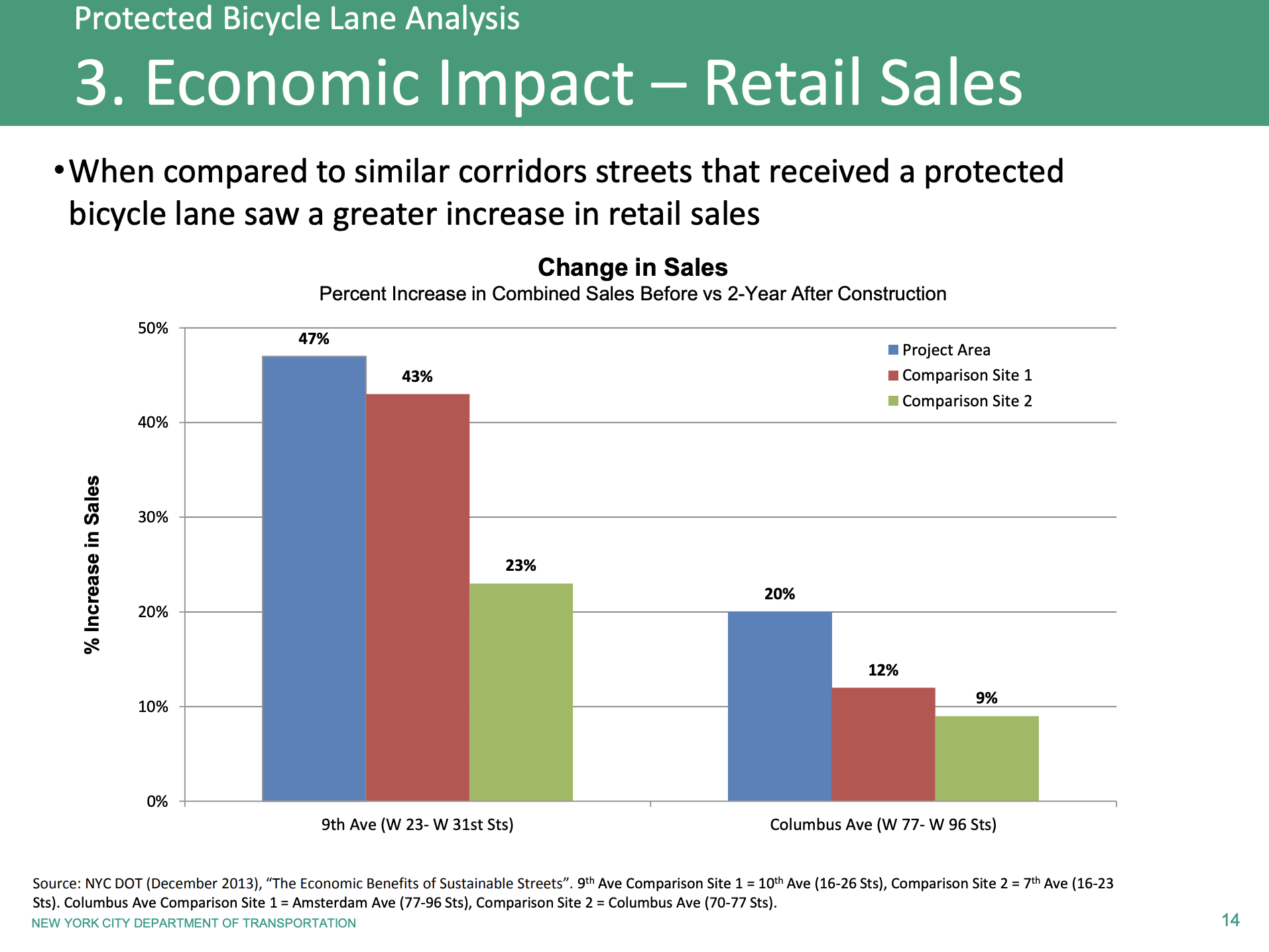Pedestrians in Madrid’s central business district, while the City closed it to cars for the first time during the 2018 Christmas season. (Ayuntamiento de Madrid)
Here at Copenhagenize Design Co., we talk a lot about how bicycles save money: the latest estimates from the City of Copenhagen show that society earns €0.64 ($0.74 USD) for every kilometre cycled, versus a loss of €0.71 ($0.81 USD) for every kilometre driven.
But, despite these numbers, a common myth among the media, businesses, and policy makers is that taking away car space in order to make room for pedestrians or bikes will damage local business. Yet again, the most recent numbers from Madrid disprove this notion.
Over the 2018 Christmas period, Madrid closed its city centre to cars. Now, data from the project, analysed by the Banco Bilbao Vizcaya Argentaria (BBVA) and Madrid’s city council, show that retail takings increased by 9.5% on Madrid’s main shopping street during the pilot. Madrid is the latest city to take steps towards making its city centre car-free, following the likes of Oslo and Paris, to name a few.
Although there is no bicycle-specific data in this instance, the results are not surprising. We know that in countless other examples, bicycle users spend just as much — if not more — than motor vehicle drivers, and that the installation of bicycle lanes on commercial corridors tends to be accompanied by an increase in retail sales along those corridors.
The proof for the economic benefits of bicycling to society — including local businesses — is clear, and decreasing the relative efficiency of car traffic is an important step in encouraging biking and other forms of non-motorised transport. It’s time for more cities to move forward on car-free streets.
The numbers: Data from New York City’s analysis of its protected bicycle lanes in 2014 similarly show an increase in local retail sales. (NYC Department of Transportation)


